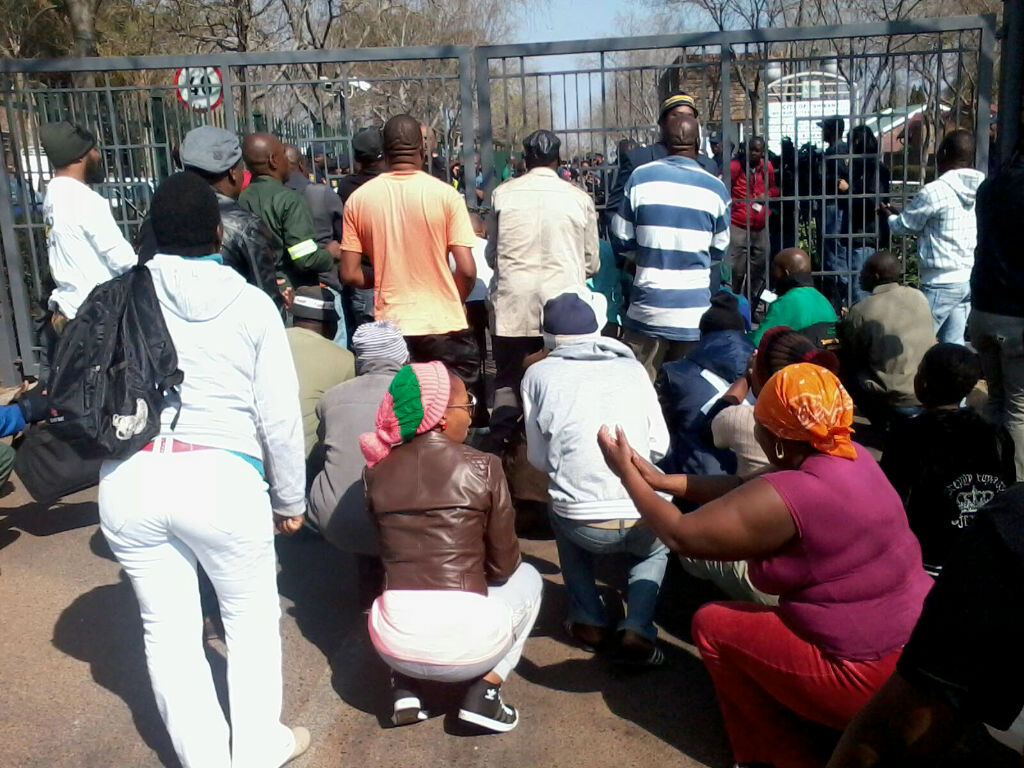Jane Duncan: Media change a stalled cause
Professor Jane Duncan (also a member of R2K) writes on media transformation in the New Age:
Next week the industry representative body for the press, Print and Digital Media South Africa, will be holding public hearings into the state of press transformation. The hearings are being held as part of an introspective exercise by the press to address weaknesses in its own transformation.
These hearings are an opportune time to pose the larger question: nearly two decades into democracy, to what extent have the media, including the press, actually transformed? A transformed media system is a necessary component of a healthy democracy. The media should enable citizens to become aware of, raise, and hopefully resolve society’s most pressing issues.
Answering this question depends on how one defines transformation. Most probably the dominant definition, namely racial, and to a lesser extent, gender transformation, will receive the most attention at the hearings. This form of transformation is measured primarily through broad-based black economic empowerment scorecards.
If this is taken as the measure of transformation, then the broadcast media are undoubtedly more transformed than the press. Two of the four major press groups are entirely white-owned, and performance on many other elements of the scorecard are patchy, notably management control, employment equity and skills development.
But the BBBEE scorecards are an inadequate measure of transformation. In 2000 media academics Mashilo Boloka and Ron Krabill disputed the emphasis on race as an indicator of transformation, which they felt all too easily lapsed into an approach that emphasised racial substitution. This could potentially lead to media control simply passing from white elites to black elites.
Successful transformation, they argued, would be achieved when the media “reflects, in its ownership, staffing and product, the society within which it operates, not only in terms of race, but also socio-economic status, gender, religion, sexual orientation, region, language, etc. This is only possible if access is opened –again in ownership, staffing, and product – not only to the emerging black elite, but also to grassroots communities of all colours.”
This more substantial definition emphasises class and diversity as crucial elements of transformation. If one applies this definition to the media landscape, then a rather different picture emerges.
There is no doubt that today’s media system is much more in tune with the society in which it operates than it was under apartheid. The number of broadcasting outlets has increased, while – reflecting international trends – the number of newspapers has declined slightly. Many internet-based media outlets have been established. Yet the increase in media has not automatically led to a diversification of content, because of the “hotelling effect”, where media organisations that compete for the same audiences and revenue streams tend to produce similar fare.
Broadcasting transformation has stagnated over the past decade. Commercial television remains dominant in spite of the fact that policy requires three tiers of broadcasting: commercial, community and public service. Regional and local television barely exists. There is little indication that this picture will change significantly during the pending migration from analogue to digital television.
Radio has transformed the most owing to the relatively cheap nature of the medium. But community radio remains underfunded, making it vulnerable to capture by political and economic elites. In the early years of democracy the South African Broadcasting Corporation made impressive transformation strides. But since then, much of its content has commercialised. The government exercises inappropriate levels of control, especially over top management appointments, and deference to the ruling party is becoming increasingly apparent.
Newspapers remain on the cutting edge of investigative journalism, breaking far more major stories than the electronic media. Their investigative capacity has on many occasions put them on a collision course with society’s power holders, especially the ANC. Yet in spite of escalating threats to press freedom, journalists still enjoy considerable autonomy to produce journalism in the classical watchdog mould. But too much journalism, including of the investigative kind, remains tied to urban areas, and reporting on the conduct of political and, to a much lesser extent, economic elites. There is an overreliance on official sources of information and a disconnect from the issues affecting the grassroots, although there are some important attempts to address these problems.
The resurgence of the community and alternative press is a welcome development, but the competitive landscape remains skewed unfairly towards the dominant players.
It could be, and has been, argued that the internet is diversifying the media, and smartphones are driving up levels of internet access at an extremely rapid rate. Prohibitively high handset and data costs remain a significant barrier to mass usage, though, as does the dominance of English on the internet.
Furthermore, according to statistics provided by Effective Measure, the most accessed South African sites are published largely by the news organisations that dominate traditional legacy media.
It is a paradox of South Africa’s media transformation that in an era of unprecedented freedom and media abundance so many workers and unemployed people feel that the only way to make their voices heard is to take to the streets. The post-apartheid project of constituting an inclusive, accessible public sphere through the media is clearly in trouble.
Why is this so? Media transformation has been premised largely on the commercial model, with limited public intervention through, for instance, some funding provided to the Media Development and Diversity Agency and the SABC. This means that the media system has shaped and been shaped by South Africa’s social inequalities, with its division into a two-tiered society of “haves” and “have-nots”.
The distributional rewards of media transformation have been spread unevenly across society. The media system has taken on the shape of a funnel, with more media being clustered further up the funnel while media access tapers off drastically towards the lower end of the funnel. As a result, South Africa has become a society that is unable to see itself accurately. The country wakes up to the fact that it has a mounting social crisis only once a catastrophic event happens, like the Marikana massacre, or the eruptions on the farms.
The government has argued that it does not have money to fund media to significant degrees as its priorities must lie elsewhere. But much poorer countries in the region fund public media.
It can be surmised that in spite of the state’s developmental character, the existing media system continues because it serves society’s power holders. It allows them to look past the country’s social problems and pretend that they don’t exist.
Furthermore, frustrated workers and the unemployed cannot access the means of communications easily to voice their frustrations and to organise. They are generally spoken about, kept disempowered; rendered subjects as opposed to citizens.
But society’s power holders may be miscalculating. The events of the past few months have shown that many people are not willing to remain subjects. They will struggle against the existing social order, even if it costs them their jobs or lives.
If the media are unwilling or unable to tell this story properly – clearly one of the most important stories of South Africa’s post apartheid history – then the people who are making this history will find ways of telling it without them. And as they remake society from below, eventually they will remake the media too.



